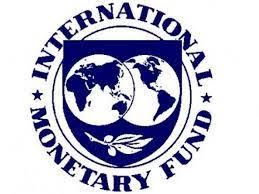IMF Report on India’s Financial System:

The International Monetary Fund (IMF), in its report titled “India Financial System Stability Assessment”, has flagged concerns about the stress in Non-Banking Financial Companies (NBFCs) and its potential risks to India’s financial system.
- 63% of power sector loans in FY 2024 were from the three largest Infrastructure Financing NBFCs, up from 55% in 2019-20.
- 56% of NBFC lending is financed by market instruments (mutual funds, and corporate bond markets), with the remaining from bank borrowings.
- State-owned NBFCs like Indian Renewable Energy Development Agency (IREDA) are at higher risk due to their exposure to the power sector which face delays, and financial stress. Without expected revenues, NBFCs asset-liability mismatches that hinder repayments.
- NBFCs can’t accept demand deposits, lack deposit insurance, and have no direct Reserve Bank of India (RBI) liquidity access, making them vulnerable to financial stress.
- The report warns that geopolitical risks and miscalculated monetary policies by major central banks could lead to rising interest rates and slow economic growth, affecting both NBFCs and banks.
- IMF stress tests indicate that Public Sector Banks (PSBs) may struggle to maintain the 9% Capital Adequacy Ratio (CAR) if stagflation (slow growth + high inflation) occurs.
- RBI mandates 12% CAR for PSBs and 9% for scheduled commercial banks.
- Nearly 80% of Indian adults have financial accounts, supported by an extensive banking network and digital infrastructure like Unified Payments Interface (UPI).
- The rapid rise of retail investors in equities has transformed India into one of the world’s largest equity options trading markets.
- India’s financial system assets (including banks, NBFCs, insurance companies, mutual funds, and pension funds) amount to nearly 190% of GDP, with banks holding 60% of total financial assets.




